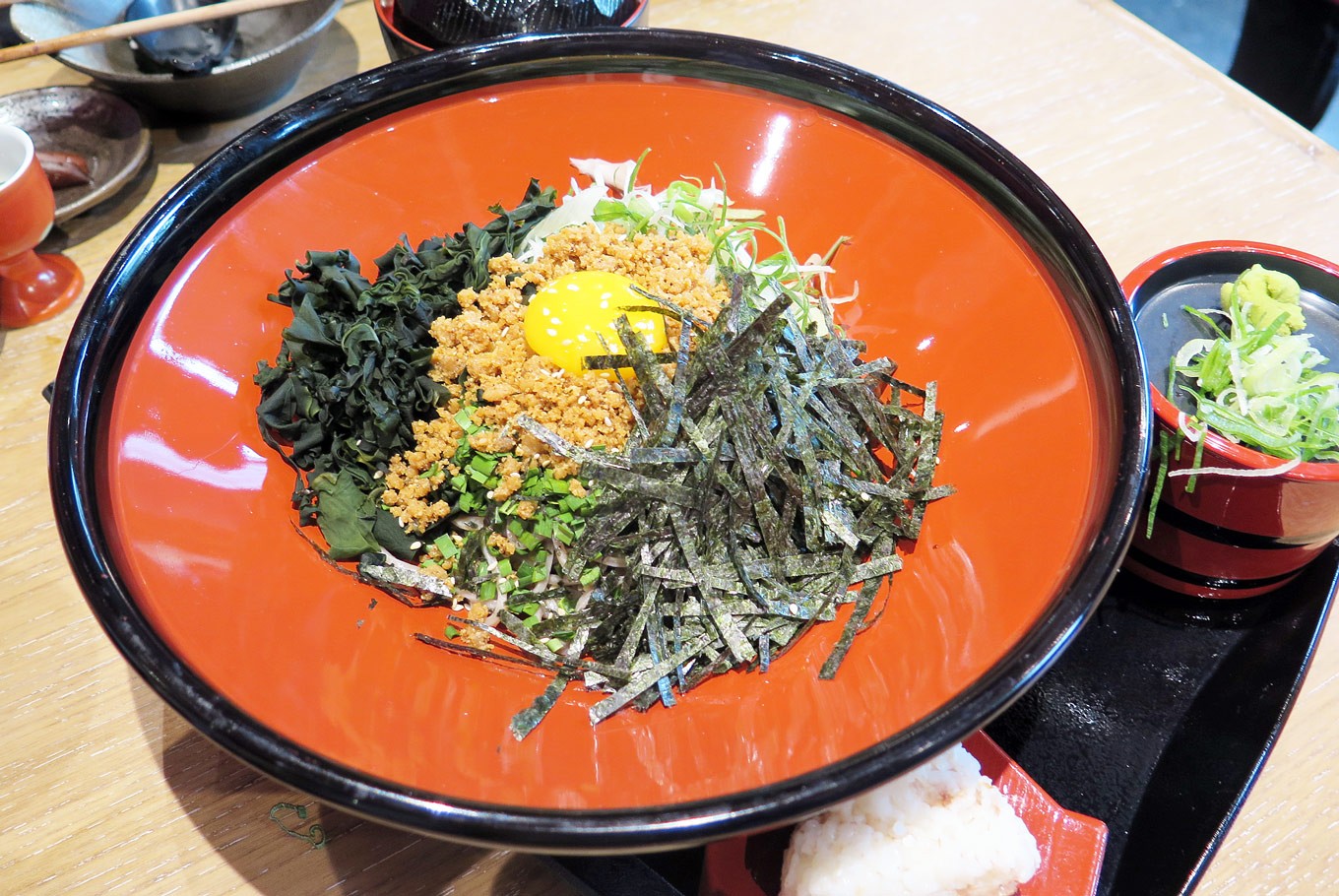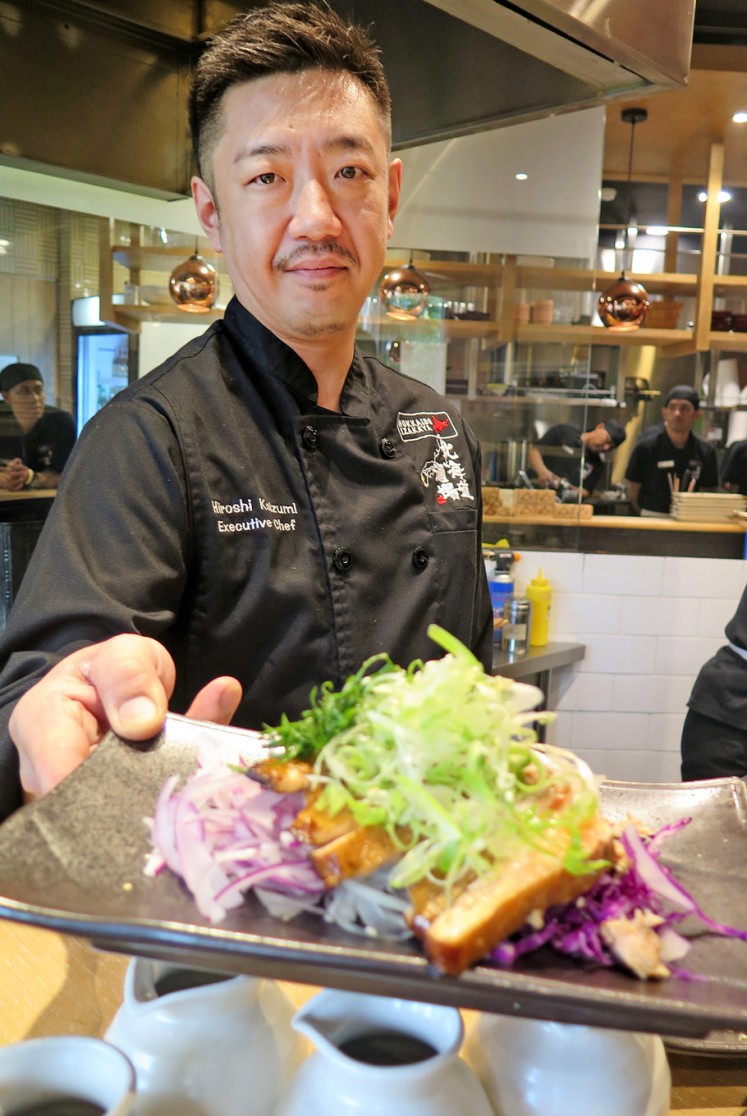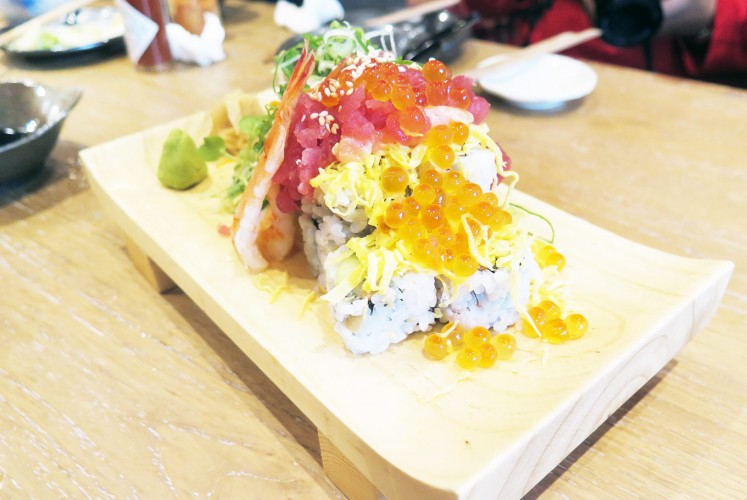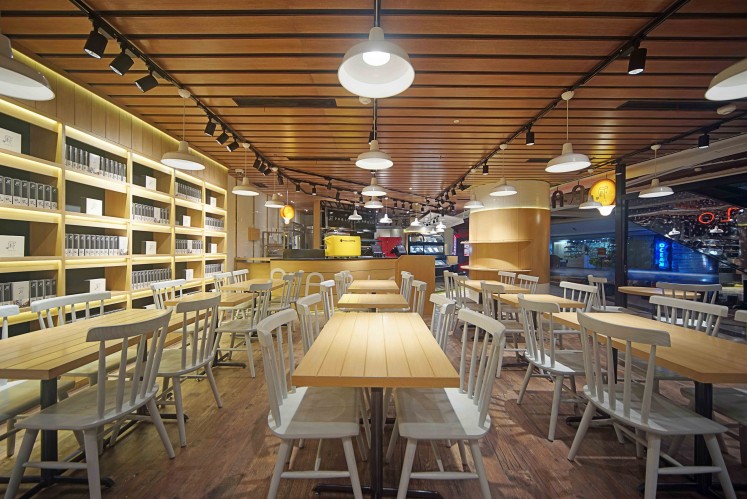Tasting authentic Japanese flavors
In Jakarta, foodies can sample the finest Japanese cuisine the way it is prepared and served in its home country.
Change Size
 Kurogama maza soba (cold) (JP/A. Kurniawan Ulung)
Kurogama maza soba (cold) (JP/A. Kurniawan Ulung)
C
lad in a black chef coat, Koizumi Hiroshi visited our table as we were busy taking photos of a big bowl of hot soba topped with deep-fried kakiage, a kind of tempura dish with a variety of chopped vegetables and seafood.
Hiroshi asked us to enjoy the dish while it was hot because he was afraid the noodles could overcook if they sat in the broth for too long.
Knowing that we were not familiar with the dish, he then taught us how to eat it — by crushing the tempura with our hands and mixing it into the hot broth. He later asked us to add wasabi if we preferred it to be spicy.
The chef then instructed me to place my face and hands at a certain proximity from the bowl before sampling the soba, which looks like ramen and udon at glance but is made of buckwheat flour. He smiled as I slurped the noodles.
Hiroshi, who started his cooking career at the age of 19 in Kyoto, was born and raised in Obihiro city in Hokkaido, Japan’s northernmost island and largest soba producer.

He recently introduced 19 Japanese dishes from Hokkaido — which he says is the food capital of Japan — at the newly opened Hokkaido Izakaya restaurant in Jakarta, the first in Indonesia and the third in Southeast Asia.
Before moving to Jakarta, Hiroshi served as a chef at Hokkaido Izakaya in Singapore.
“At Hokkaido Izakaya, one of our customers’ favorites is the soba, which is freshly handmade at our restaurant — starting from scratch daily, from 100 percent buckwheat flour from Horokanai,” he explained.
After kakiage tempura soba, we sampled a bowl of kurogame maze soba — cold dry soba with minced meat in spicy black sesame sauce and zaru soba, traditional cold soba dipped in soba sauce.
Before serving soba, however, Hiroshi dished up a bowl of fresh oysters with chunks of lemon and uni ikura salmon rice bowl — rice topped with sea urchin, salmon roe and salmon meat.
“We import fresh oysters three times a week,” he said.
Hokkaido Izakaya Jakarta spotlights each town in Hokkaido with its signature products, such as buckwheat flour from Horokanai, miso from Yakumo, potatoes from Furano and oysters from Akkeshi.
At the restaurant, all ingredients are imported from Hokkaido, world renowned for its fresh seafood and superb beef and vegetables.
“We bring seafood and vegetables directly from Hokkaido to attract more Indonesian people to visit Hokkaido,” said Ishiguro Yuji, director of PJ Partners Group, a food and beverage (F&B) developer that specializes in the import and export of F&B brands in Asia.

He set up Hokkaido Izakaya in Jakarta because he knew many Indonesian had yet to be familiar with soba.
He is upbeat and optimistic that local foodies in addition to visitors from around the world and Japanese are ready to try it. He already has plans to open a second Hokkaido Izakaya in Jakarta this year, as well as two more in Bandung and Surabaya next year.
“Like Indonesian people, we [Japanese people] also love noodles and rice,” Yuji said.
Jakarta food lovers have also taken a liking to Japan’s desserts, with popular Japanese cheese tart chain Pablo, known for its best cheese tart, garnering loyal customers in the capital.
Founded by Masamitsu Sakimoto, Pablo, which started in Osaka in 2011, has 37 outlets in Japan and nine overseas outlets, including two in Indonesia. It is known for baked cheese tarts in various degrees of doneness, from rare to medium — like how meat cooked.
Indonesia’s first Pablo outlet is located in Gandaria City Mall, South Jakarta. In March, the dessert chain opened its second location in Neo Hoho, West Jakarta, with a stylish 50-seat café enhanced by a wood-themed interior. A third outlet is slated to serve North Jakarta foodies later this year.

“We want to get closer to culinary lovers, especially those who want to get the most authentic Pablo experience,” explained Kelvin Budiman, director of Pablo Cheese Tart Indonesia.
Pablo is now offering new flavors of baked cheese tarts, such as Strawberry Cheese Tart, which combines sweet and sour strawberries with cheese custard, pistachio and marshmallow; and Matcha Cheese Tart, which boasts surprising elements, such as azuki (red beans) and shiratama (mochi or Japanese rice cake).
It also serves mini baked cheese tarts in flavors such as matcha (green tea), chocolate and original.
Kelvin said Indonesian customers prefer the Original Cheese Tart, which yields a gooey cheese custard core.
Like those in Japan, Pablo outlets in Jakarta produces freshly baked cheese tarts made of premium ingredients, including pastry shells and filling imported from Japan. At least 500 regular tarts and mini tarts are assembled and baked daily on-site.
“Ninety percent of our ingredients is from Japan. We import them once a month,” Kelvin said.









